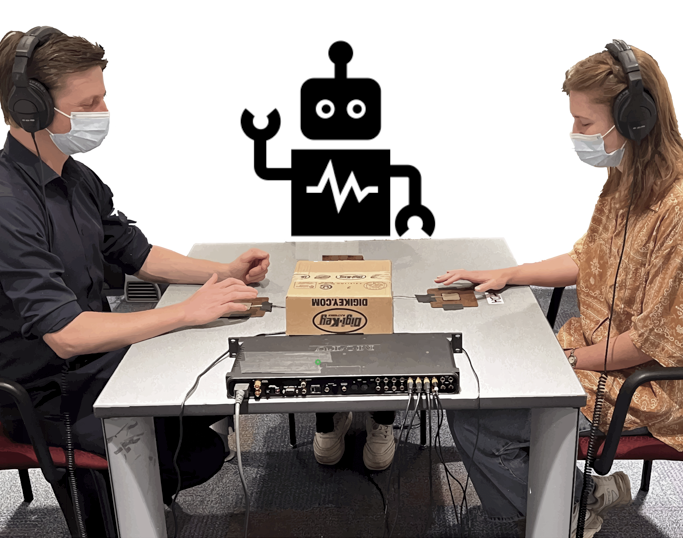We’re happy to announce that our new research article “Virtual Partners Improve Synchronization in Human?Machine Trios” has been published in Cognitive Science (ISSN: 0364-0213, Impact Factor: 4.1). The work was co-authored by IDMIL members Dr. Bavo Van Kerrebroeck and Prof. Marcelo M. Wanderley together with Prof. Caroline Palmer at McGill University and Assoc. Prof. Alexander P. Demos at the University of Illinois Chicago.
Abstract
The interplay between auditory and motor processes in sensorimotor synchronization is crucial for achieving a cohesive group performance, particularly in musical groups. This study addressed the impact of virtual partners on synchronization performance in human trios. With a novel methodology, the study utilized virtual partners driven by computational models to simulate real-time synchronization with human participants. Trio synchronization with three synchronization models was compared: linear error-correction, Kuramoto oscillators, and delay-coupled oscillators. Forty-eight musically trained adults performed synchronization tasks in both in-phase and anti-phase rhythms with either a human confederate or one of the three computational models as the third partner, forming 24 trios. Synchronization stability and accuracy were significantly enhanced in trios that contained a virtual partner compared to those with a human confederate. Model optimizations revealed a stronger coupling of participants with each other than with virtual partners for in-phase rhythms, and a stronger coupling of virtual partners with participants than of participants with each other in anti-phase rhythms; these patterns were obtained for the oscillator models but not for the linear model. Additionally, participants reported higher perceived synchronization success, greater control over performance, and stronger social relationships with virtual partners than with the human confederate. These findings highlight the potential of virtual partners for improving synchronization and suggest avenues for further research in the use of adaptive agents in group performance settings.
More information: http://dx.doi.org/10.1111/cogs.70040

